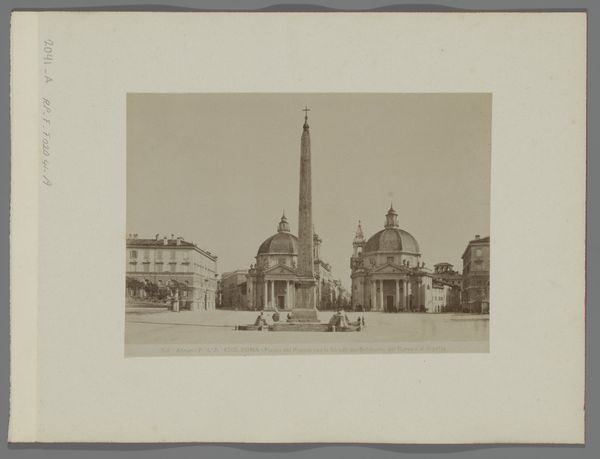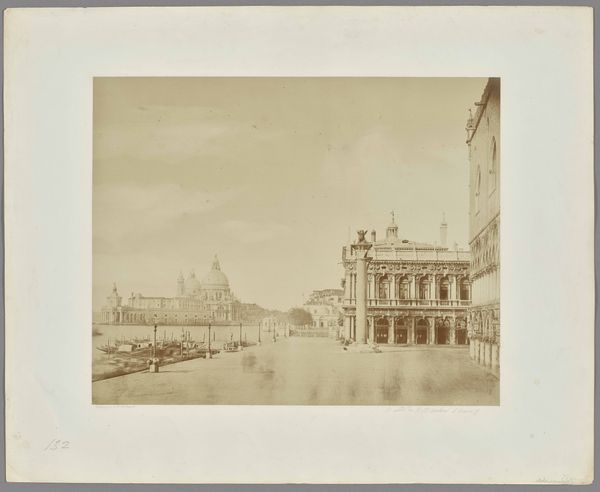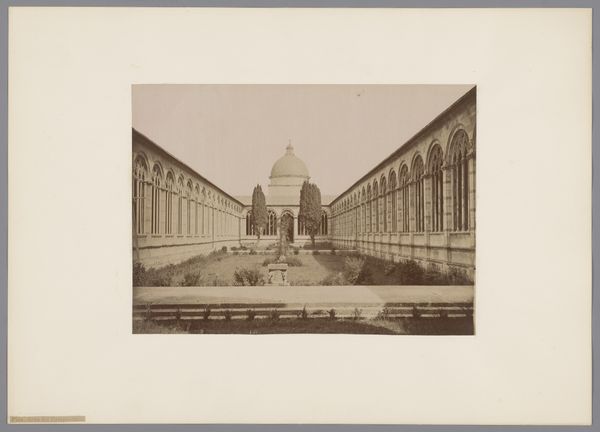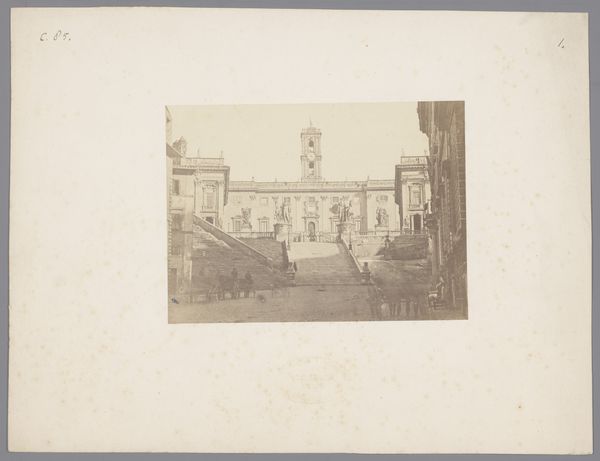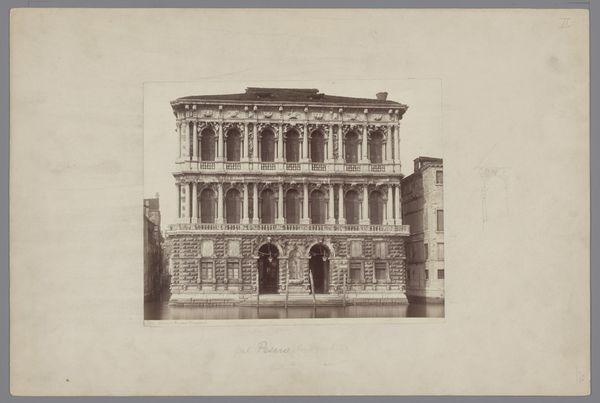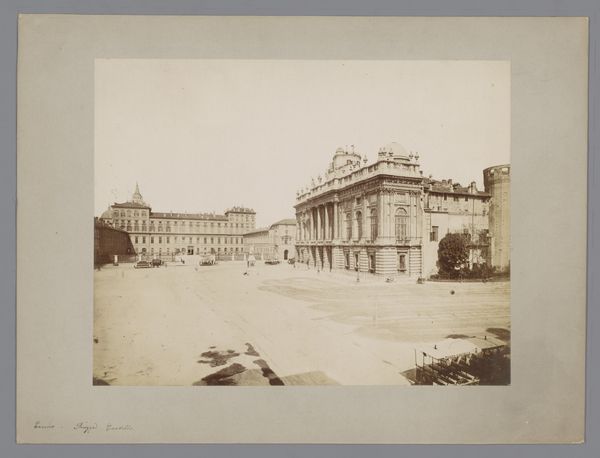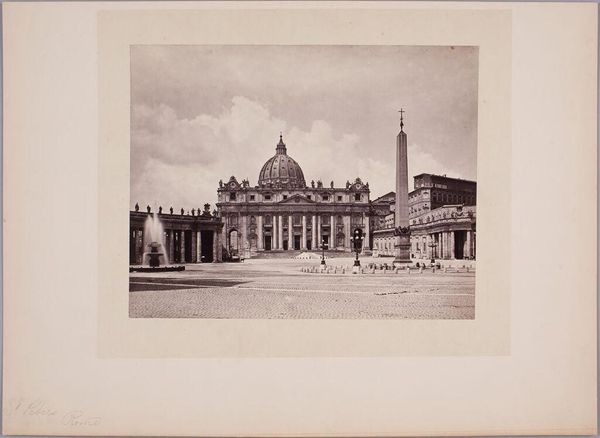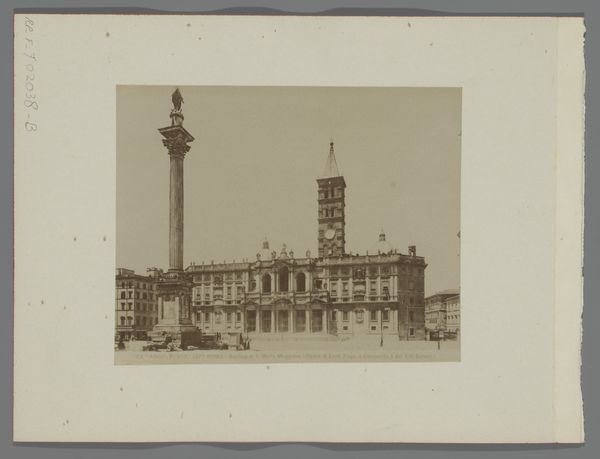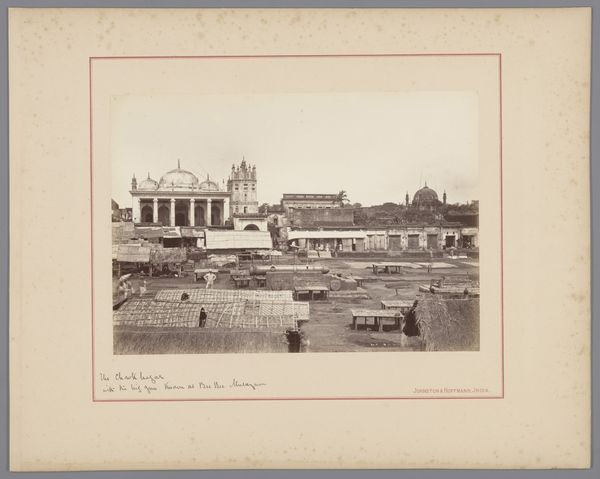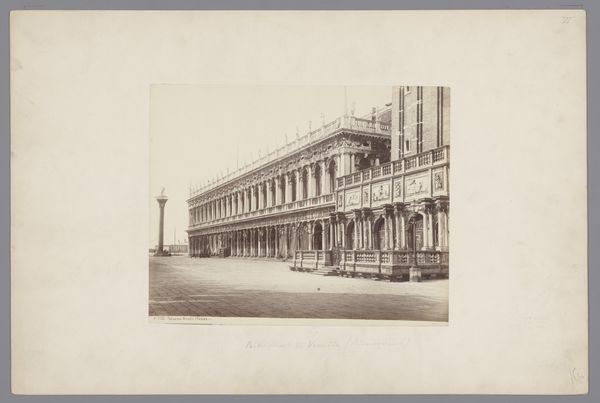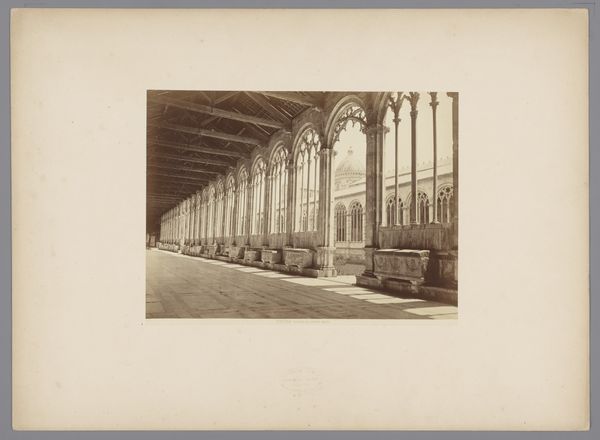
Gezicht op het Sint-Pietersplein en het Apostolisch Paleis te Vaticaanstad, Italië 1864 - 1881
0:00
0:00
Dimensions: height 317 mm, width 445 mm
Copyright: Rijks Museum: Open Domain
Curator: It’s amazing how a simple albumen print can capture such grand scale. Giacomo Brogi, the artist, really gives us a feel for the expanse of the Piazza and the Apostolic Palace. Editor: Yes, this photograph almost feels like a stage set, doesn't it? All those crisp lines and monumental structures. I immediately notice the people; they look tiny and almost insignificant compared to the architecture surrounding them. It speaks volumes about power, control, and perhaps even oppression. Curator: I think the perspective plays a large role in that feeling of scale, placing us almost humbly at the edge of the Piazza. And the soft light adds this nostalgic, almost dreamy quality that makes it easier to just observe without feeling immediately overwhelmed. It’s lovely, really. Editor: Dreamy, perhaps, but for whom? Looking at it through a postcolonial lens, the vastness of the space underscores the Church's dominion and the assertion of its cultural hegemony through art and architecture. This isn’t merely a pretty cityscape, it is about power, control, and ideological visual language. Curator: I see your point, and perhaps Brogi was indeed part of reinforcing that existing power dynamic simply by creating images that highlighted these grand spaces. Still, there is a serenity here— a balance that hints at a type of stability, even if that comes with certain underlying issues. The geometry feels so solid! Editor: Stability bought at what cost? What histories have been erased, whose voices have been silenced to construct such a unified, coherent image of the Church's grandeur? I always want to ask who profits from such presentations and what it does for those whose experience runs counter to it. Curator: I guess beauty and oppression can live together sometimes. It complicates the act of observation. Thanks for helping me look past that initial impression. Editor: Of course! Seeing the image this way isn’t about diminishing its impact or negating the beauty you find within it, it simply acknowledges the multi-layered, complex history that it embodies. Curator: Exactly! Thinking of it more like holding multiple lenses at once really helps contextualize my relationship with the work as well. Editor: And acknowledging those layers opens us up to a more nuanced conversation, allowing us to engage critically and hopefully build toward a more equitable future.
Comments
No comments
Be the first to comment and join the conversation on the ultimate creative platform.

